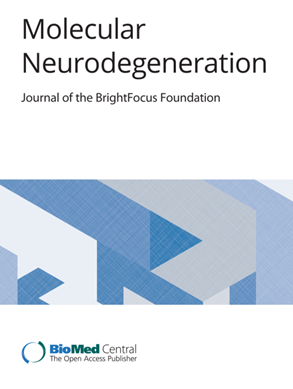Bridging systemic metabolic dysfunction and Alzheimer’s disease: the liver interface
IF 17.5
1区 医学
Q1 NEUROSCIENCES
引用次数: 0
Abstract
Alzheimer’s disease (AD) is increasingly recognized as a systemic disorder with a substantial metabolic disorder component, where the liver significantly impacts the brain via the liver-brain axis. Key mechanisms include the liver’s role in clearing peripheral β-amyloid (Aβ), the influence of hepatic enzymes and metabolites on cognitive decline, and the systemic effects of metabolic disorders on AD progression. Hepatokines, liver-secreted proteins including fibroblast growth factor (FGF)-21, selenoprotein P (SELENOP), Fetuin-A, Midbrain astrocyte-derived neurotrophic factor (MANF), apolipoprotein J (ApoJ), sex hormone-binding globulin (SHBG), Adropin and Angiopoietin-like protein 3 (ANGPTL3), could regulate insulin sensitivity, lipid metabolism, oxidative stress, immune responses, and neurotrophic support. These pathways are closely linked to core AD pathologies, including Aβ aggregation, tau hyperphosphorylation, neuroinflammation, oxidative stress and mitochondrial dysfunction. Lifestyle interventions, including exercise and dietary modifications, that regulate hepatokines expression may offer novel preventive and therapeutic strategies for AD. This review synthesizes current knowledge on the liver-brain crosstalk in AD, emphasizing the mechanistic role of liver in bridging metabolic dysfunction with neurodegeneration and underscores the diagnostic and therapeutic potential of hepatokines in addressing AD’s complex pathology.桥梁全身性代谢障碍和阿尔茨海默病:肝脏界面
阿尔茨海默病(AD)越来越被认为是一种具有大量代谢紊乱成分的全身性疾病,其中肝脏通过肝脑轴显著影响大脑。关键机制包括肝脏在清除外周β-淀粉样蛋白(Aβ)中的作用,肝酶和代谢物对认知能力下降的影响,以及代谢性疾病对AD进展的全身影响。肝因子、肝分泌蛋白,包括成纤维细胞生长因子(FGF)-21、硒蛋白P (SELENOP)、Fetuin-A、中脑星形胶质细胞来源的神经营养因子(MANF)、载脂蛋白J (ApoJ)、性激素结合球蛋白(SHBG)、Adropin和血管生成素样蛋白3 (ANGPTL3),可以调节胰岛素敏感性、脂质代谢、氧化应激、免疫反应和神经营养支持。这些途径与AD核心病理密切相关,包括Aβ聚集、tau过度磷酸化、神经炎症、氧化应激和线粒体功能障碍。生活方式干预,包括运动和饮食改变,调节肝因子表达可能为阿尔茨海默病提供新的预防和治疗策略。本文综述了阿尔茨海默病中肝脑串音的最新研究,强调了肝脏在桥接代谢功能障碍和神经退行性变中的机制作用,并强调了肝因子在解决阿尔茨海默病复杂病理中的诊断和治疗潜力。
本文章由计算机程序翻译,如有差异,请以英文原文为准。
求助全文
约1分钟内获得全文
求助全文
来源期刊

Molecular Neurodegeneration
医学-神经科学
CiteScore
23.00
自引率
4.60%
发文量
78
审稿时长
6-12 weeks
期刊介绍:
Molecular Neurodegeneration, an open-access, peer-reviewed journal, comprehensively covers neurodegeneration research at the molecular and cellular levels.
Neurodegenerative diseases, such as Alzheimer's, Parkinson's, Huntington's, and prion diseases, fall under its purview. These disorders, often linked to advanced aging and characterized by varying degrees of dementia, pose a significant public health concern with the growing aging population. Recent strides in understanding the molecular and cellular mechanisms of these neurodegenerative disorders offer valuable insights into their pathogenesis.
 求助内容:
求助内容: 应助结果提醒方式:
应助结果提醒方式:


